With lemon, mandarin, orange, and grapefruit trees that are at least 10, 20, and 30 years old, respectively, this time of year is a citrus bonanza in my backyard.
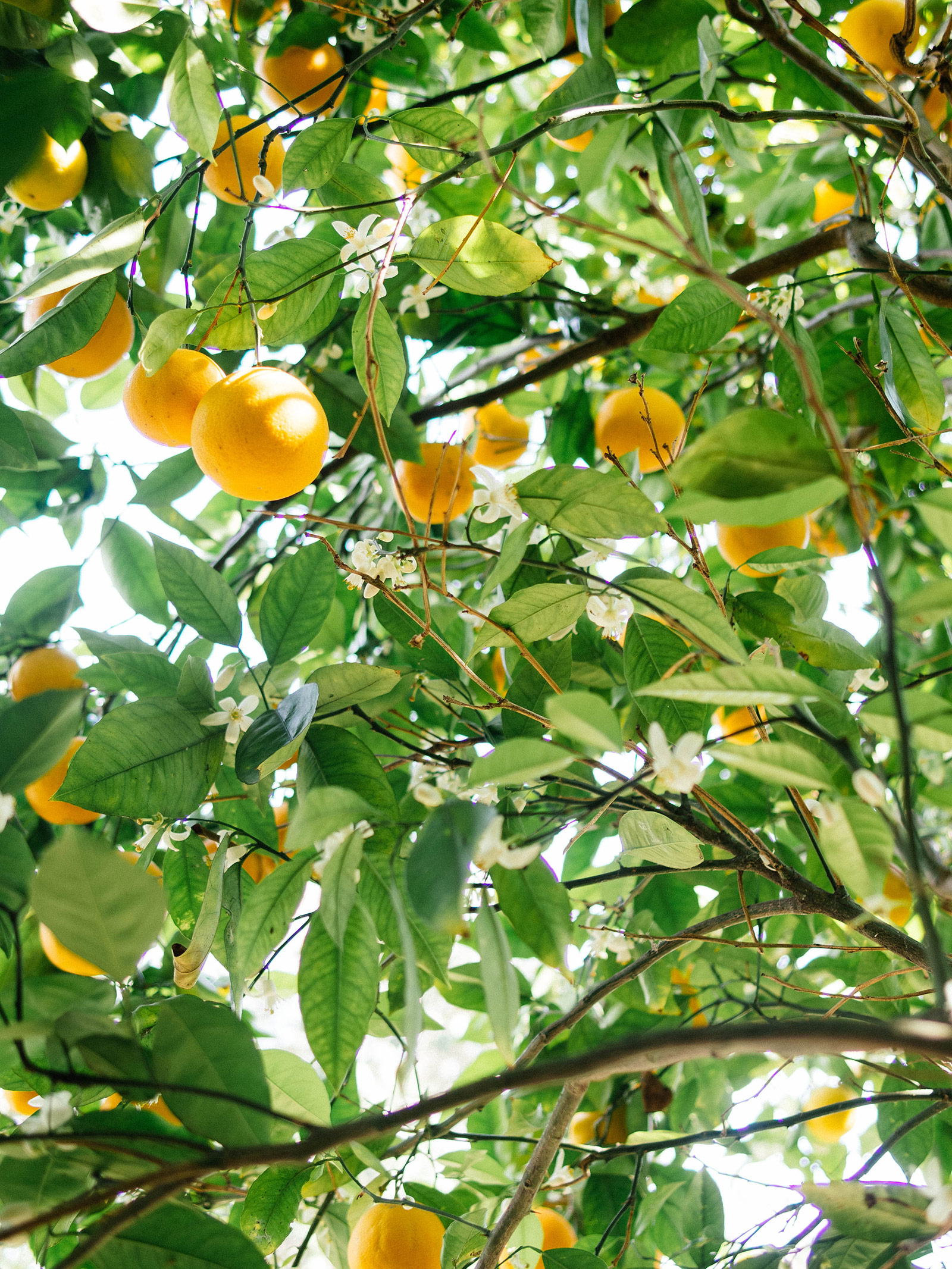
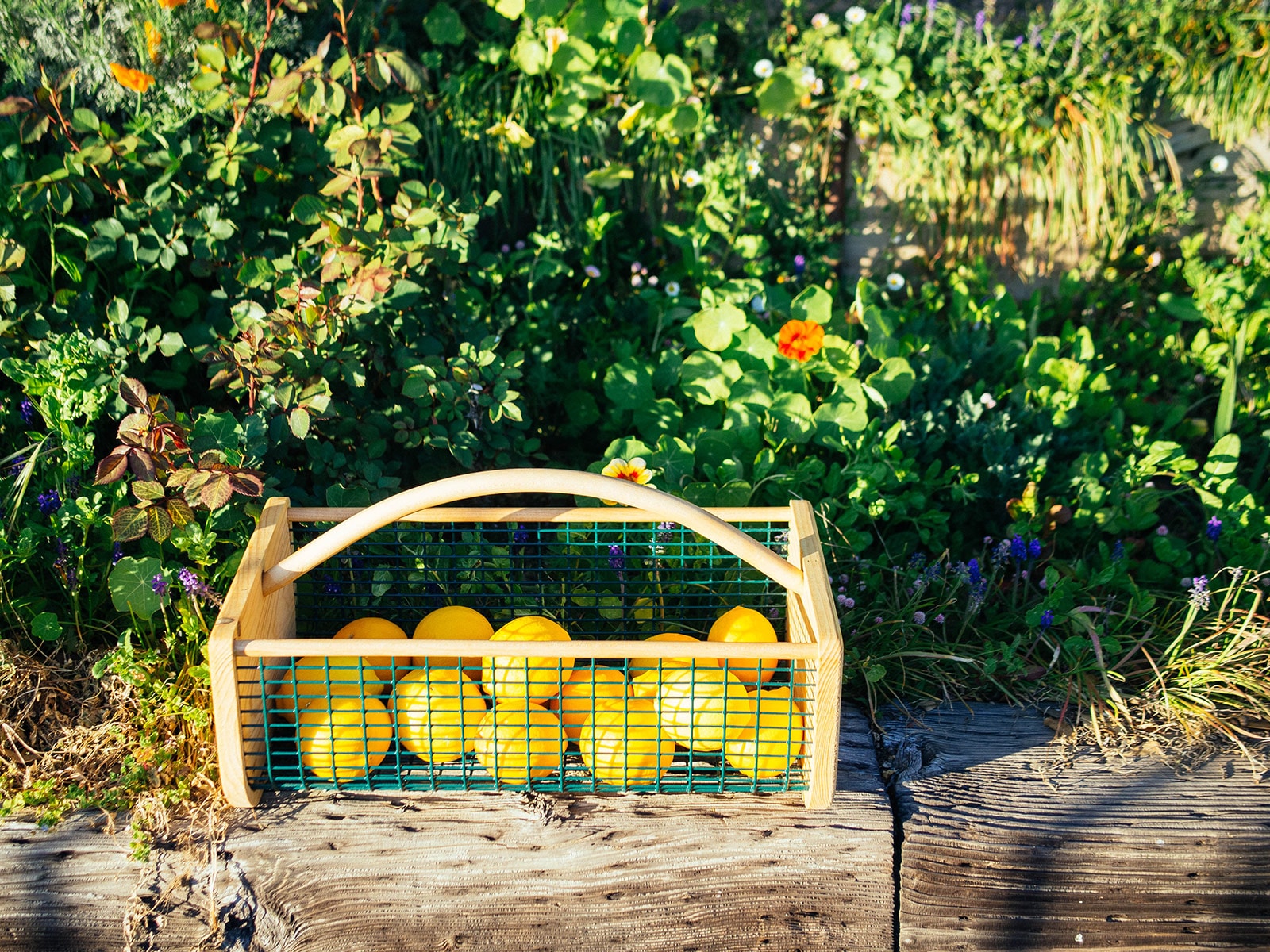
And though there’s no shortage of fruit in the kitchen, I hate letting any part of it go to waste. I zest, squeeze, and juice my way through baskets of citrus every week, but what can you really do with a few cupfuls of zest? (You can only freeze so much lemon.)
The answer: citruscello. (Or in this case, grapefruitcello and orangecello.)
Disclosure: If you shop from my article or make a purchase through one of my links, I may receive commissions on some of the products I recommend.
A few years ago I shared my recipe for homemade limoncello, a bright and boozy concoction that originated in Italy—but you don’t need your own Sorrento lemons to craft your own limoncello.
I make mine with homegrown Eureka lemons (the thick skin is ideal for zesting) and these days, I also do up smaller batches of grapefruitcello and orangecello using Oro Blanco grapefruit zest and Valencia orange zest (sometimes even mixed together).
My citruscello tends to be on the stronger side as I like to use it as a mixer, but if you let yours sit and age for a few months, the bite definitely mellows and the liqueur becomes a a lot smoother.
This is not meant to be consumed in big gulps, anyway; a chilled cordial glass filled with cold citruscello is all you need. You want to enjoy every luscious sip over good conversation with company after a leisurely three-hour dinner, the way the Italians do it.
My original batch of limoncello made quite a lot (as the liqueur can be divvied up into smaller bottles for gift-giving), but this recipe makes a more manageable amount… so you can try a few different flavors at once!
Each 750 ml bottle of Everclear (or vodka) fills a mason jar with room to spare for the zest. Once mixed with simple syrup, you’ll end up with 1 1/2 quarts in the batch, which you can further sweeten with more syrup if desired.
I won’t repeat all the detailed directions from my original limoncello recipe (do read it first before you move on), as the process is the same no matter what type of citrus you use, but here are a few key points to keep in mind:
- Use organic, blemish-free citrus, and scrub them clean before zesting
- A Microplane makes easy work of all that zesting you have to do
- 151- or 190-proof Everclear is my preferred alcohol for extracting the citrus oils, but you can also use a mid-grade vodka in the highest proof you can find (minimum 100-proof)
Since citruscello takes some time to sit and age, you’ll want to start the process six to eight weeks before you actually need/want to drink it. (This is also something to keep in mind if you’re making a batch or two as gifts.)
Small-Batch Grapefruitcello and Orangecello
Makes 1 1/2 quarts
Ingredients
8 to 10 grapefruits or oranges
1 (750 ml) bottle high-proof pure grain alcohol
3 cups water
2 cups sugar
Instructions
Zest your fruit, taking care to remove only the outer yellow or orange peel (and not the white pith underneath). I usually end up with around 1/2 cup (up to 1 cup) of zest per batch.
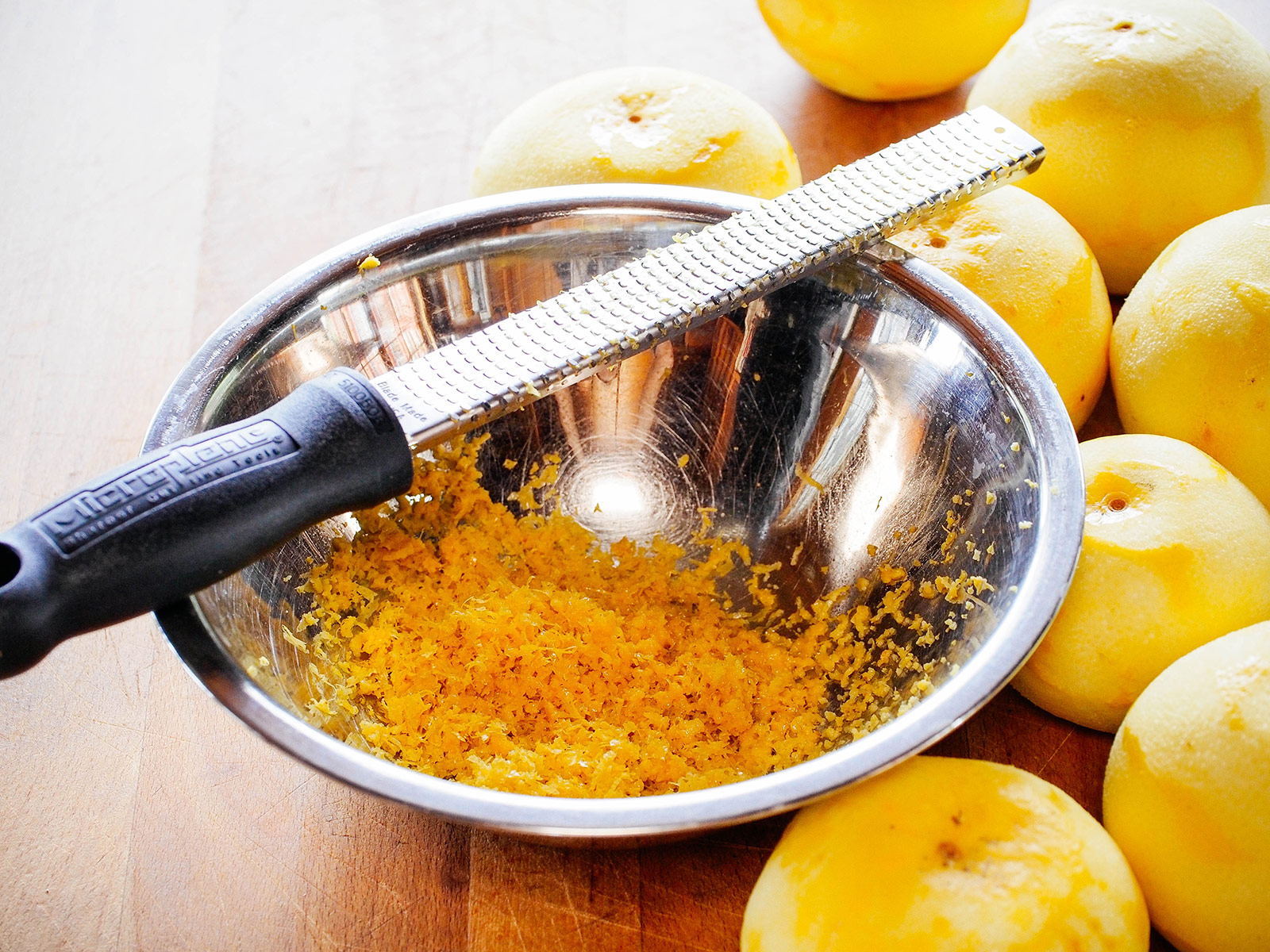
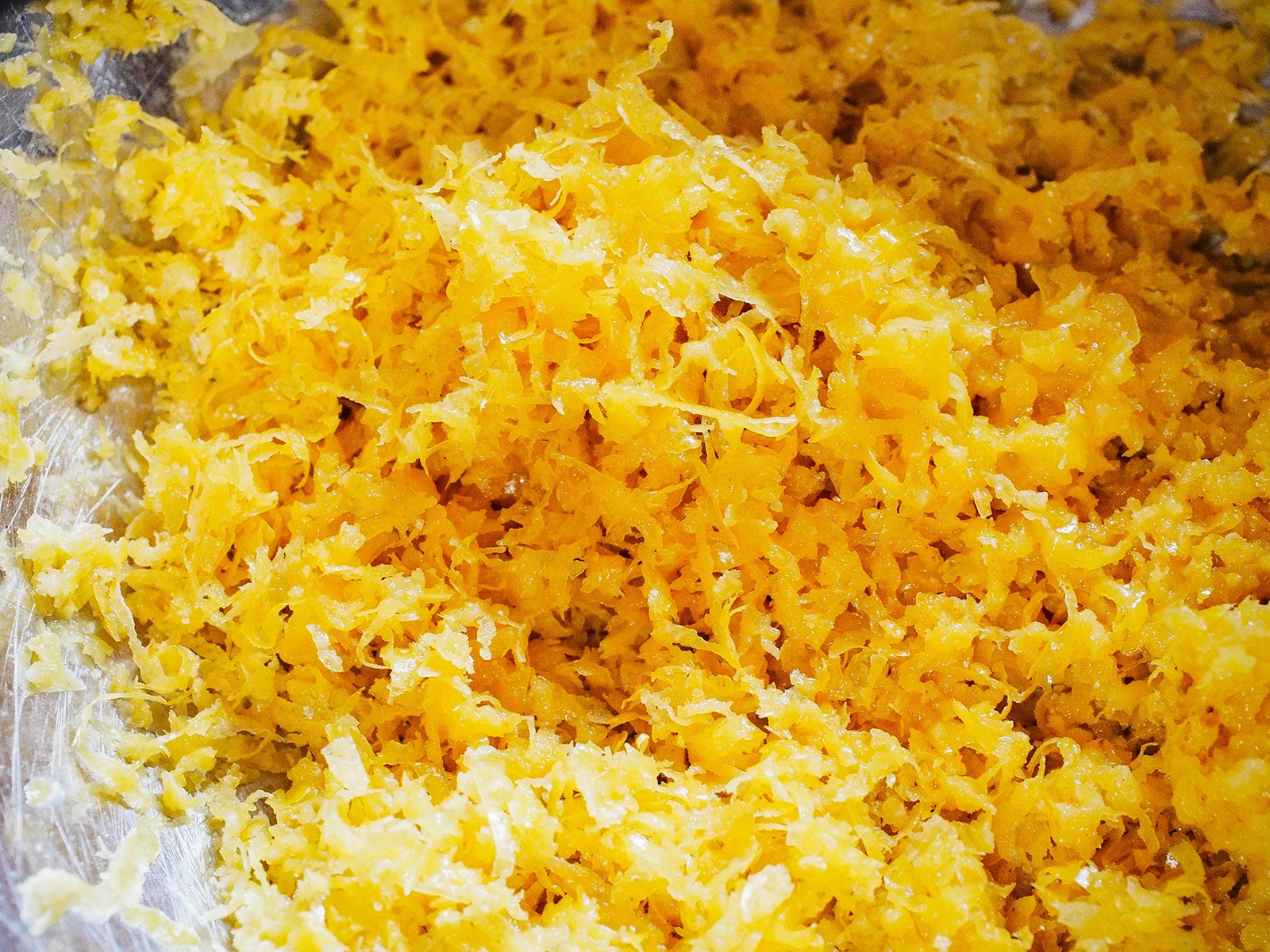
Dump the zest into a 32-ounce jar and pour the alcohol over it. Seal with a lid and store in a cool and dark place.
Steep the zest for at least three weeks (if using Everclear) or six weeks (if using vodka) until the zest turns white and brittle.
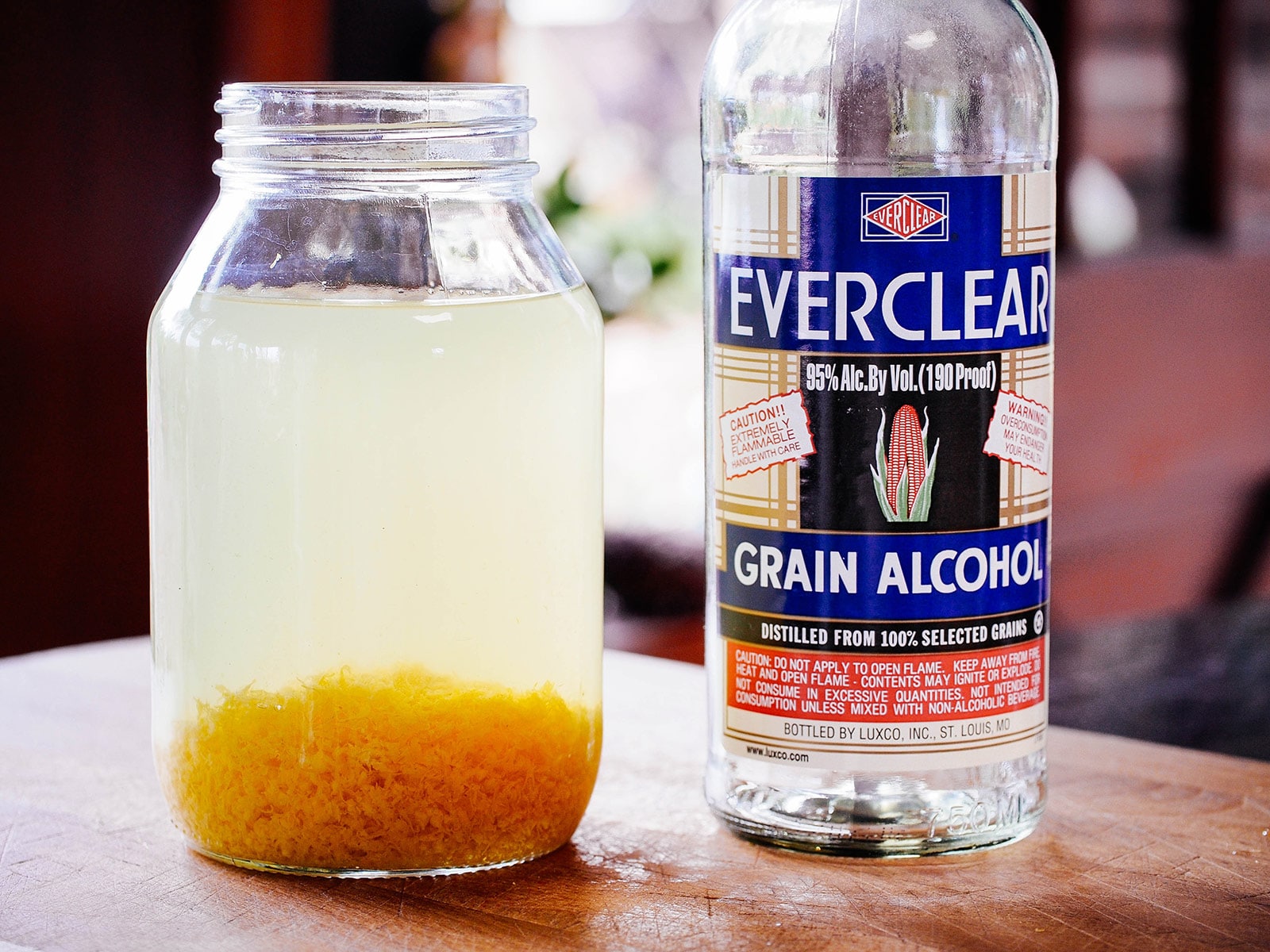
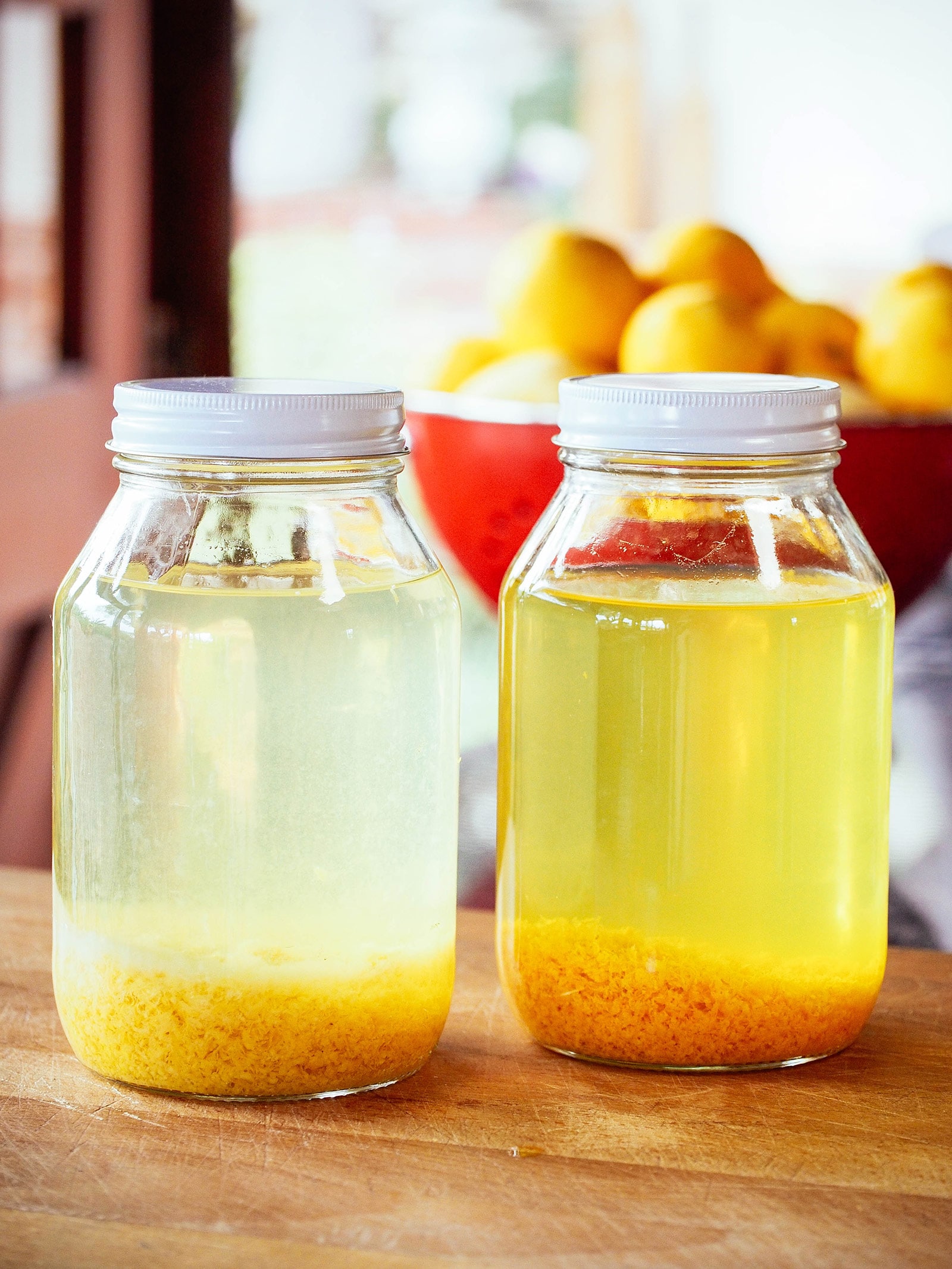
To make the simple syrup, combine the water and sugar in a medium saucepan over medium-high heat. Bring to a boil and stir until the sugar is dissolved. Let cool to room temperature before using.
Pour half of the lemon-infused alcohol into a second jar (or reuse the empty Everclear bottle), then fill each jar with an equal amount of simple syrup. No need to fuss with the zest for now; just let them sit until the liqueur is ready to be strained.
After one to two weeks (or even longer for better flavor), strain both jars of citruscello through a fine mesh sieve into a large pitcher, then strain again through an ultra fine sieve (like a pour-over coffee filter or several layers of cheesecloth) as you pour the cello back into the mason jars.
You’ll fill each jar just over halfway full; add more simple syrup if you like it a little sweeter, but I recommend waiting at least a month for the flavor to mellow out before you decide how much more to add. You might not need to at all, and in the meantime, you can use the potent “young” cello as a mixer.
Store the cello in the freezer and serve in chilled glasses for a refreshing digestif, or stir into champagne or gin for a boozy cooler.
Recommend products for making grapefruitcello and orangecello:
[show_shopthepost_widget id=”3399342″]
Microplane Premium Zester | Ball Wide-Mouth Quart Jars | Bormioli Rocco Hermetic Seal Glass Pitcher with Lid | OXO Good Grips 6-Inch Fine Mesh Strainer | Barista Warrior Pour Over Filter | Regency Wraps Natural Ultra Fine 100% Cotton Cheesecloth
Small-Batch Grapefruitcello and Orangecello
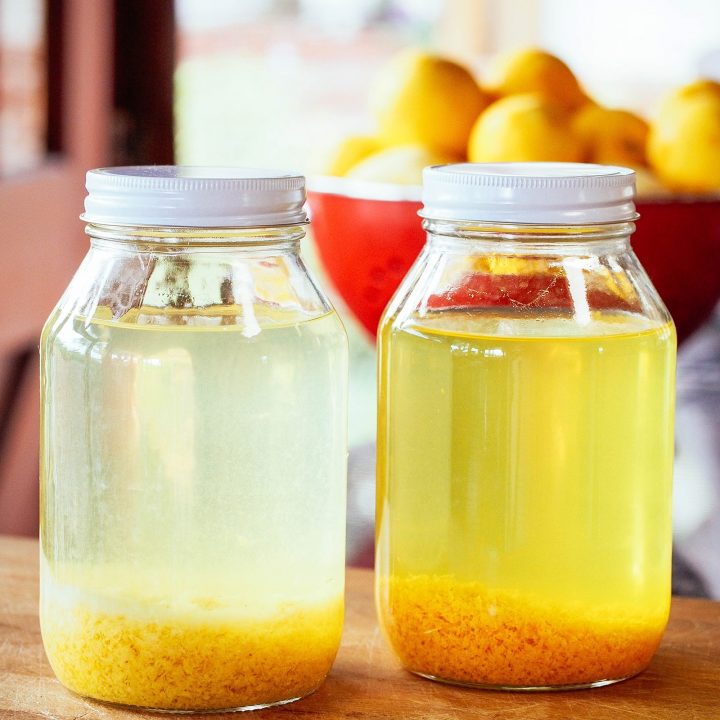
These citrusy liqueurs are inspired by classic Italian limoncello but have a flavor and character all their own. Use grapefruitcello and orangecello as a cocktail mixer, or serve them straight in chilled glasses as a digestif.
Ingredients
- 8 to 10 grapefruits or oranges
- 1 (750 ml) bottle high-proof pure grain alcohol
- 3 cups water
- 2 cups sugar
Instructions
- Zest your fruit, taking care to remove only the outer yellow or orange peel (and not the white pith underneath). I usually end up with around 1/2 cup (up to 1 cup) of zest per batch.
- Dump the zest into a 32-ounce jar and pour the alcohol over it. Seal with a lid and store in a cool and dark place.
- Steep the zest for at least three weeks (if using Everclear) or six weeks (if using vodka) until the zest turns white and brittle.
- To make the simple syrup, combine the water and sugar in a medium saucepan over medium-high heat. Bring to a boil and stir until the sugar is dissolved. Let cool to room temperature before using.
- Pour half of the lemon-infused alcohol into a second jar (or reuse the empty Everclear bottle), then fill each jar with an equal amount of simple syrup.
- After one to two weeks (or even longer for better flavor), strain both jars of citruscello through a fine mesh sieve into a large pitcher.
- Strain the citruscello a second time through an ultra fine sieve (like a pour-over coffee filter or several layers of cheesecloth) as you pour the cello back into the mason jars. You'll fill each jar just over halfway full; add more simple syrup if you like it a little sweeter, but I recommend waiting at least a month for the flavor to mellow out before you decide how much more to add. You might not need to at all, and in the meantime, you can use the potent "young" cello as a mixer.
- Store the cello in the freezer and serve in chilled glasses for a refreshing digestif, or stir into champagne or gin for a boozy cooler.
Notes
- Use organic, blemish-free citrus, and scrub them clean before zesting.
- A Microplane makes easy work of all that zesting you have to do.
- 151- or 190-proof Everclear is my preferred alcohol for extracting the citrus oils, but you can also use a mid-grade vodka in the highest proof you can find (minimum 100-proof).
Nutrition Information:
Yield:
12Serving Size:
1Amount Per Serving: Calories: 229Total Fat: 0gSaturated Fat: 0gTrans Fat: 0gUnsaturated Fat: 0gCholesterol: 0mgSodium: 3mgCarbohydrates: 57gFiber: 4gSugar: 48gProtein: 2g
Nutrition information isn’t always accurate.
This post updated from an article that originally appeared on March 27, 2014.
View the Web Story on the best grapefruitcello and orangecello recipe.


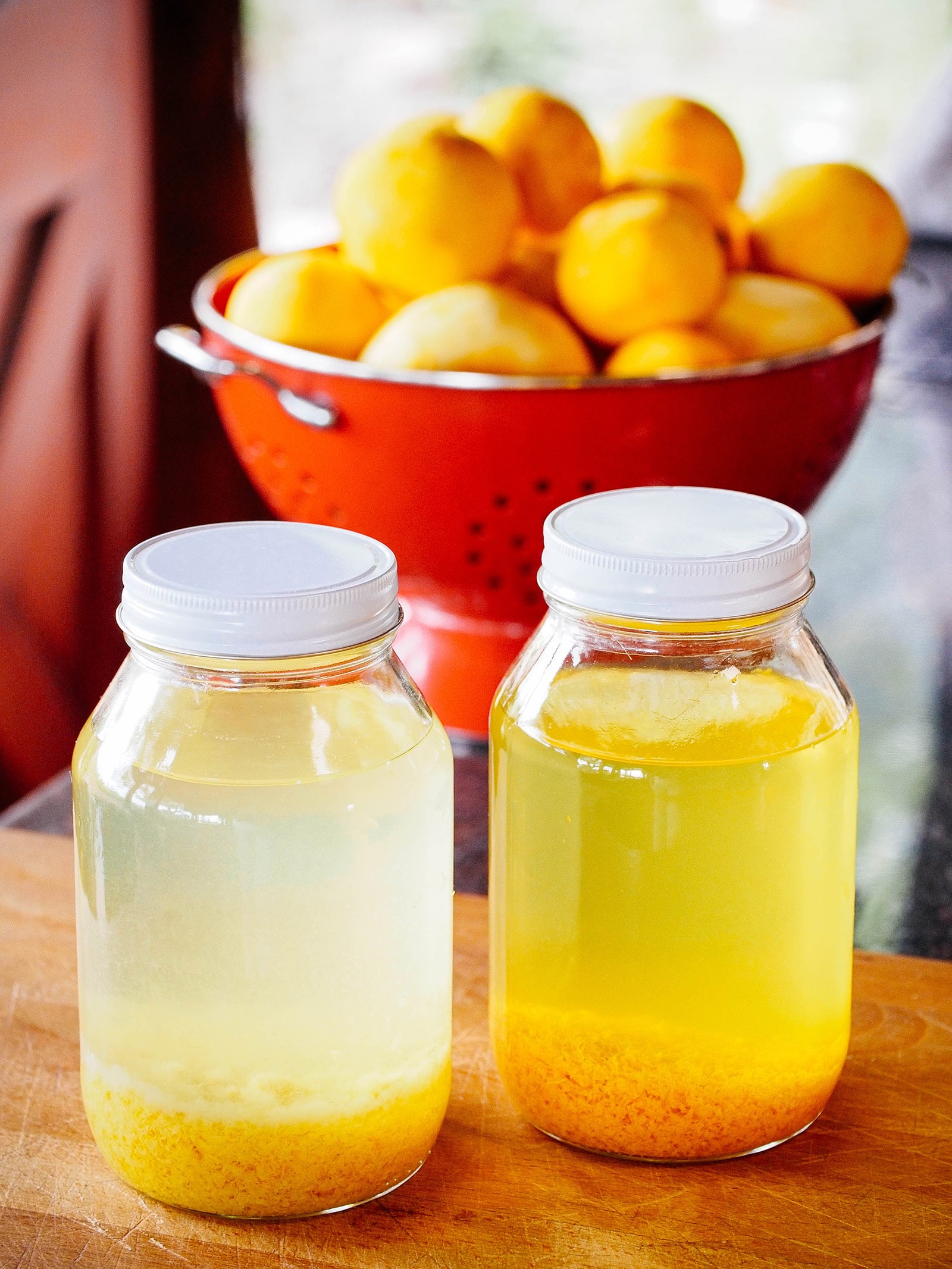













I made your limoncello and orangecello and both taste amazing! I put both batches in the freezer and I noticed that the orangecello is partially frozen, this did not occur with the limoncello. Has this ever happened to you?
Thank you for sharing your recipes!! It’s been so fun to make.
After step 7, do you let it mellow for a month at room temp or in the freezer?
Let it mellow at room temp. You can actually just store the cello at room temp, but I recommend the freezer since it tastes better cold. 🙂
Natalie Beyer liked this on Facebook.
Josie Rees liked this on Facebook.
David Stupplebeen liked this on Facebook.
Saunya Amos liked this on Facebook.
Allison Martinson liked this on Facebook.
Cristine Schneidy Kernbach liked this on Facebook.
Natasha Winterrose liked this on Facebook.
Heather Wilkins liked this on Facebook.
Amy Goo liked this on Facebook.
Karen Jo Turner liked this on Facebook.
Kathleen Nestell liked this on Facebook.
Oh yum, this sounds good!